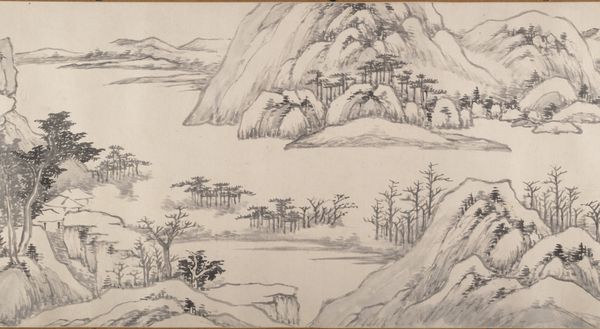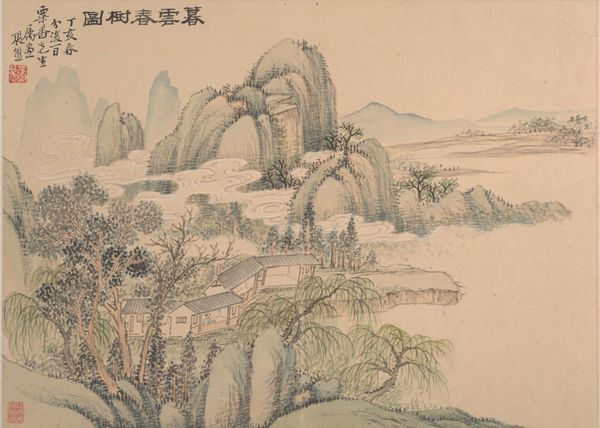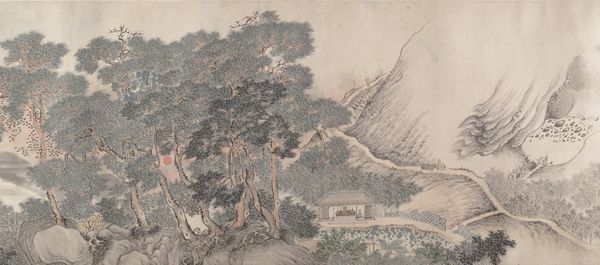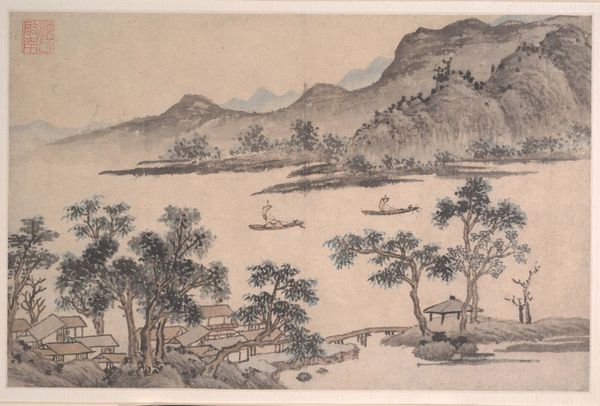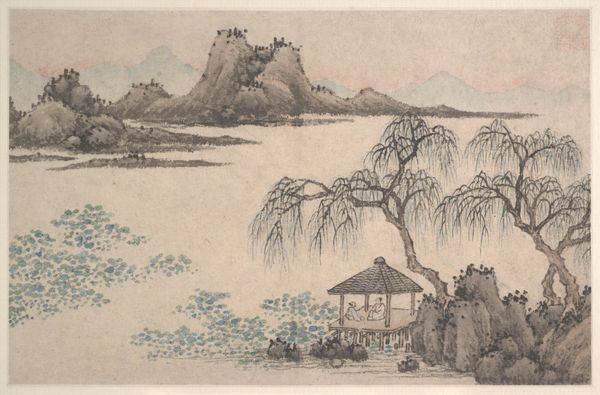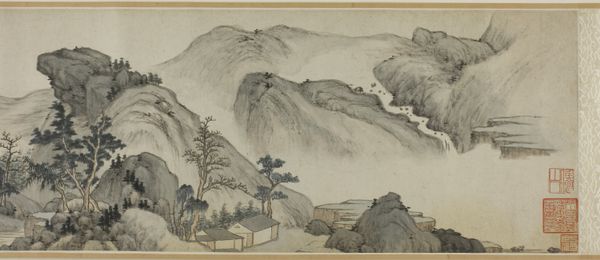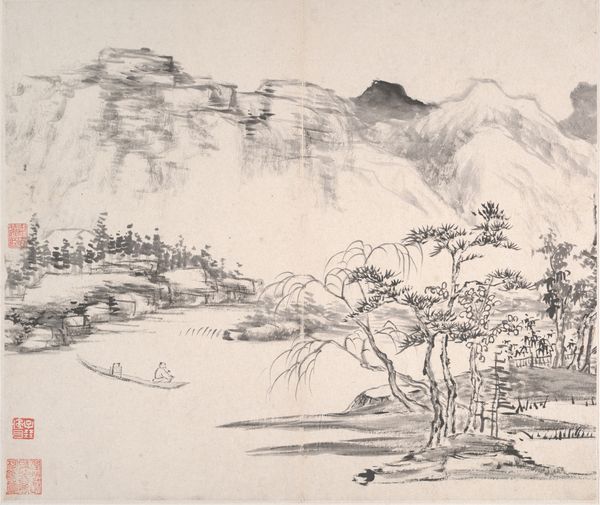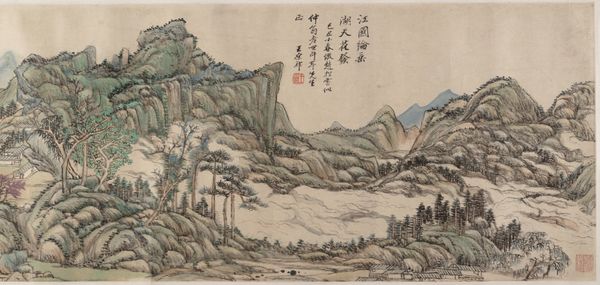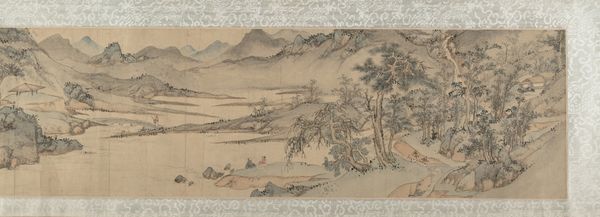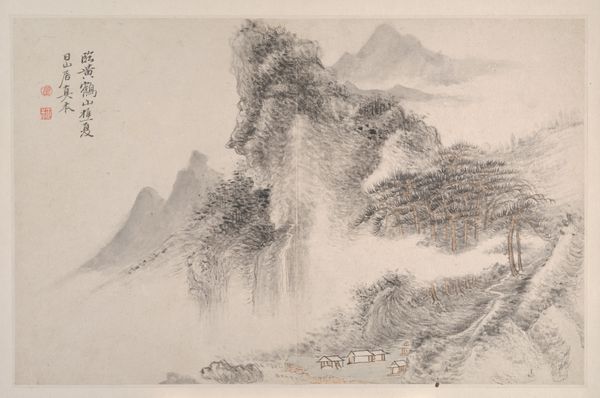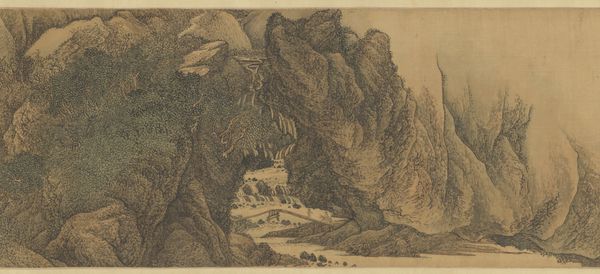
painting, watercolor
#
painting
#
asian-art
#
landscape
#
watercolor
#
orientalism
Dimensions: Image: 14 in. x 17 ft. 10 3/4 in. (35.6 x 545.5 cm) Overall with mounting: 14 3/8 in. x 34 ft. 7 1/2 in. (36.5 x 1055.4 cm)
Copyright: Public Domain
Curator: Looking at this, I am immediately struck by the tranquility. It is like stepping into a memory, hazy and dreamlike. Editor: And that makes sense when we consider this piece: Wang Yuanqi's "Wangchuan Villa," created in 1711. He's emulating, reflecting, and reconstructing the style of earlier masters. Curator: So it's a deliberate reaching back. What specific imagery jumps out at you within the historical context? Editor: Well, these literati landscape paintings weren't just pretty scenery; they were loaded. The villa itself becomes a symbol, perhaps a sanctuary away from the pressures of public life, particularly for those in Wang Yuanqi’s position, balancing personal expression with imperial service. Curator: I notice the arrangement of the rocks and trees; each element carefully placed to suggest a kind of harmony. Water in the lower part balances the strong verticals of mountain cliffs behind the village, reflecting concepts of balance and restraint. Editor: Absolutely, and think about who could afford a villa or retreat like this: the landowning scholar-officials. Landscapes become a way to assert status and refined taste but often obfuscate realities of dispossession. We need to think about labor and who has the ability to seek respite in nature. Curator: An important distinction! Yet, I think the very act of returning to old masters indicates some tension with what *is*, almost implying the past ways held truer resonance than the present of the 18th century. The cultural weight of these references must be significant. Editor: I agree. Plus, these images can reinforce exclusionary ideologies by aestheticizing historical power dynamics. This artistic dialogue carries a significant burden. Curator: Understanding Wang Yuanqi’s intentions and the landscape conventions helps unpack deeper significance embedded in his artistic choices. I see more than scenery; I feel centuries of longing looking back and finding solace. Editor: Ultimately, "Wangchuan Villa" speaks volumes, from class divides to artistic revivals. We've started unraveling how aesthetics interact with cultural narratives, offering insights applicable even to today’s artistic production.
Comments
No comments
Be the first to comment and join the conversation on the ultimate creative platform.
